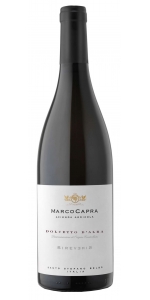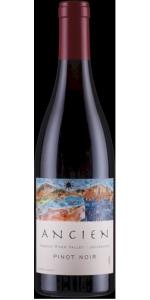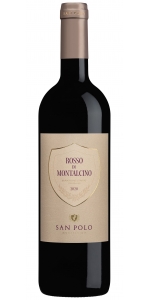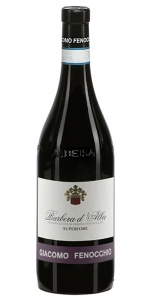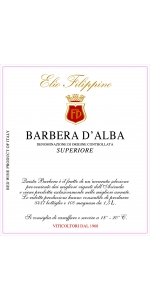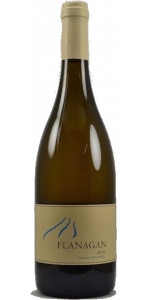Gagliasso Dolcetto d'Alba Vigna Ciabot Russ 2021
Capra Marco Sireveris Dolcetto d'Alba is made from 100% Dolcetto.
Color: deep, bright ruby red with violet hues.
Bouquet: vinous, fruity and fragrant, with notes reminiscent of ripe cherries.
Flavour: full, dry flavour with a pleasantly bitter aftertaste, typical of this variety.
A wine for drinking throughout a meal, it is perfect with cured meat and cheese snacks, ideal with rice and pasta dishes or with red meat, all combinations which enhance its delightful suitability for drinking.
Ancien Pinot Noir Russian River Jouissance is made from 100 percent Pinot Noir.
Jouissance is sourced from the single vineyard established and farmed by Mark Lingenfelder at his home estate. Mark’s decades of experience as a vineyard manager and consulting viticulturalist have provided him the depth of experience to reach the pinnacle at his own property. Having worked with storied wineries over the years, we are grateful our paths have crossed enabling us to work with him for our Russian River designate. He tends the vines himself while relying on neighbor Lee Martinelli to provide additional help at the peak times. We work with a mix of Pommard and Dijon 667 vines from his oldest and youngest blocks – aged wisdom combines with youthful vigor!
The 2021 growing season was a welcome success after a more varied and challenging 2020. The vines came on with aplomb, demonstrating the rich fruit concentration we expect – even if the crop was meager. The ongoing drought in California served to further accentuate the character and concentration of the fruit. While warmer conditions have prevailed in other areas, the coastal areas of California continue to benefit from the maritime influence and moderating influence that it brings.
We fermented in our one ton, open-top tanks after filling by gravity. A warm fermentation with a combination of native and isolated Burgundian yeasts produced excellent and focused flavor extraction, complemented with traditional punch-downs by hand. The wine was aged entirely in Francois Freres cooperage, 40% new, and racked once, gently, prior to bottling. Grapes, must, and wines were moved using gravity through to the barrel and using inert gas through racking and bottling. 151 cases produced.
Bright fruit notes dominate the aromas with bright cherry, plum, and boysenberry underlaid by allspice and clove. On the palate the wine is liquid velvet, it’s silkiness segueing into a burst of fruit and spice that rides high on the palate while gradually opening to deeper berry, tea, and baking spices. It is a refreshing and lively Pinot Noir in its youth that will continue to fill out in depth and complexity over the next 2-5 years.
Bright and glossy ruby red in color. On the nose it reveals aromas of small fresh berries and a trace of sour cherry, melded with hints of blackberries and black cherries, followed by a hint of vanilla. A fragrant wine with satisfying intensity. On the palate it is warm, smooth and a medium-bodied with finely-balanced tannins. Dry and sinewy yet fresh with a persistent, aromatic finish.
It naturally accompanies dishes that are typical of Tuscan cuisine with its bold, authentic flavors, such as pasta and risottos made with mushrooms or truffles, pork, grilled meats and medium-matured cheeses.
Review:
Notes of ripe cherries, dried flowers and walnuts with hints of anisette and licorice. Medium- to full-bodied, compact and dense with creamy tannins and steady acidity. Weighty and structured. Drink or hold.
-James Suckling 91 Points
Fenocchio DOC Barbera d'Alba Superiore Bussia is made from 100 percent Barbera.
The color is a deep ruby red with garnet reflections. It has a rather intense bouquet, with scents typical of the vine and a full bodied and dry flavor, with a distinct and pleasing acidity. It becomes mature with aging, acquiring a full and balanced flavor.
Parcel is 2.5 hectares (6.2 acres) planted at 300 meters above sea level.
It pairs well with red and white meats, tagliatelle pasta and cheeses.
Filippino Elio Barbera d'Alba Superiore is made from 100% Barbera.
This 100% Barbera shows an intense fruity bouquet with subtle vanilla and toasty notes. Full and spicy flavors, and a good body.
The grapes are pressed and the stalks are removed. The must ferments at about 26°C for 6-9 days. After racking, before the end of fermentation, the new wine is put in 225 liter Allier barriques for long months, depending on the vintage and the wine’s structure. It is subsequently moved into stainless steel vats to rest for some months before bottling.
Flanagan Russian River Chardonnay is made from 100 percent Chardonnay.
Grapes for this wine are sourced from several top Russian River Chardonnay sites including Platt Vineyard, Ritchie Vineyard and Bacigalupi Vineyard.
A typical day in Russian River begins with cool fog that fades by mid-morning as the warm sun transforms the vineyard into a warm, welcoming place buzzing with bees. In the late afternoon the ocean air sweeps in from the west cooling the vineyard down. Soils of clay and volcanic rock, carved into rolling hills by the Russian River, are the bass line to the melody played by the sun, wind and fog.
Flanagan Chardonnay RRV has an expressive nose that is typical of the Wente Clone of Chardonnay. The palate has an elegant mélange of stone fruit and ripe citrus flavors supported by understated barrel notes. The key to the wine is the bright acidity that ties everything together. This is a great example of what top Russian River Chardonnay sites can produce when wine making is focused on balance.
Gagliasso Dolcetto d'Alba Vigna Ciabot Russ is made from 100 percent Dolcetto.
This Dolcetto offers ripe dark fruit, spice and earthy sensations, as well as hints of black pepper and anisette.
Average density of vines: 5500 vines per hectare Method of cultivation: classical Guyot method with medium-short pruning; the vineyard are three, two with west exposure and one south with medium slope. Green harvest in two different times with reduction of grapes with a production per hectare around 5500 kg . The grapes are harvested very ripe with a meticulous selection; the fermentation took place in stainless steel vats with temperature controlled. The fermentation is around 28-30°C with 5-6 days of maceration ; malolattic fermentation took place spontaneously in stainless steel vats. After malolattic fermentation the wine stay for 2 month in old big barrels; after this period the wine is bottled and refined for 4-6 month.
Refreshing acidity makes this very food friendly. It would work well with pasta topped with porcini mushrooms.
The Gagliasso Estate
The Azienda Agricola Mario Gagliasso is located in the town of La Morra, south of Piedmont, in the province of Cuneo, in the Langhe area.
The winery offers one of the most beautiful views over the Langhe area.
La Morra is located at 513 meters above sea-level, 13 km from Alba, on the top of an imposing hill with the Alps and the Monviso as a background. The hill is planted with vines, for ming huge waves and creating an amphitheatre of rare beauty.
Luca Gagliasso’s family has a long history of winemaking. Luca's grandfather began 50 years ago, at which time he bottled the first Barolo from their historic vineyard, Rocche dell'Annunziata. Around 1987, Lucas's father took over the family tradition of producing wine and brought forth a few changes: he started by using barriques from France, together with large barrels and temperature controlled steel vats. He also purchased a new vineyard. Luca began working with his father during the 2000 vintage, only part time for the first 3 years. He also worked for 3 years with their wine consultant in an analysis laboratory, and worked as a consultant for other wineries.
Luca now works alongside his father, mother, and sister on their 12 hectares of vineyards. On the weekends, Luca's sister and mother work in their restaurant as cooks – only the Gagliasso wines are served. They are currently extending their facility and in the future they plan to incorporate some guest rooms to the restaurant.
The Gagliasso family produces around 60,000 bottles: 40% Barolo, 30% Barbera, 20% Dolcetto and 10% Chardonnay. They have around 250 barriques and 6 large barrels.
Dolcetto is very fruity, aged for a small period in big cask. They produce 3 Barolos and 2 Barberas, one aged 18 months in new oak and the other one only in steel vats. They age the Barolo for 18 months in new barriques, then 12 months in a large cask. Chardonnay is cold macerated, then fermented and aged in French oak for 9 months.
- back
Cazaux Vacqueyras Rouge Grenat Noble 100% Grenache.
This wine is the result of extraordinary weather conditions. The first cuvée was produced in 1992 when violent storms and floods affected the region (especially Vaison la Romaine). The following days were radiant and accompanied by Mistral winds. We could then continue to harvest or more precisely harvest what remained of a rotten crop - but a noble rotten crop!
Following our first involuntary test of 1992, we wanted to reproduce this wine but we had to wait until 1995 to isolate the parcels that were capable of producing this noble rot. Unfortunately, the "noble" phenomenon does not occur every year despite late harvests (October 15).
The resulting wine is offers aromas of small red berries (cherries, raspberries), liquorice, fig, honey, fruit brandy and plum. It is elegant, supple and smooth on the palate with a firm, generous and suave structure. A beautiful length on spices and cherry.
This Grenache nectar marries will with dishes such as pan-fried foie gras in honey and fig preserve, leg of lamb with preserved fruits accompanied by local cereal "epautre" or other sweet and sour dishes.
Johann Michel Cuvee Grain Noir is made from 100 percent Syrah
This is delicious. Expressive, deep, rich, silky and juicy.
Well structured and round, it displays red fruit, leather, black cherry, liquorice and black berry aromas.
This Cornas is a blend from 2 different vineyard sites:
- 60% of the final blend is coming from vineyards located on the hillside (16 year old vines on the "coteau") which is planted on sandy soils, decomposed granite and some roicks, giving the strucutre, the spiciness and the licorice type of flavors to the blend.
- the other 40% of the final blend is coming from the bottom of the slope (40 years old vines on the "pied de coteau") which is planted on sandy soils, bringing acidity and balance to the wine.
Manual harvest, selection of the grapes, 100% destemming, fermentation in tanks for 3 weeks, daily remontage and pigeage.
Malolactic fermentation in oak barrels and aging on the lees for 12-18 months in barrels (2 to 4 year old barrels)



